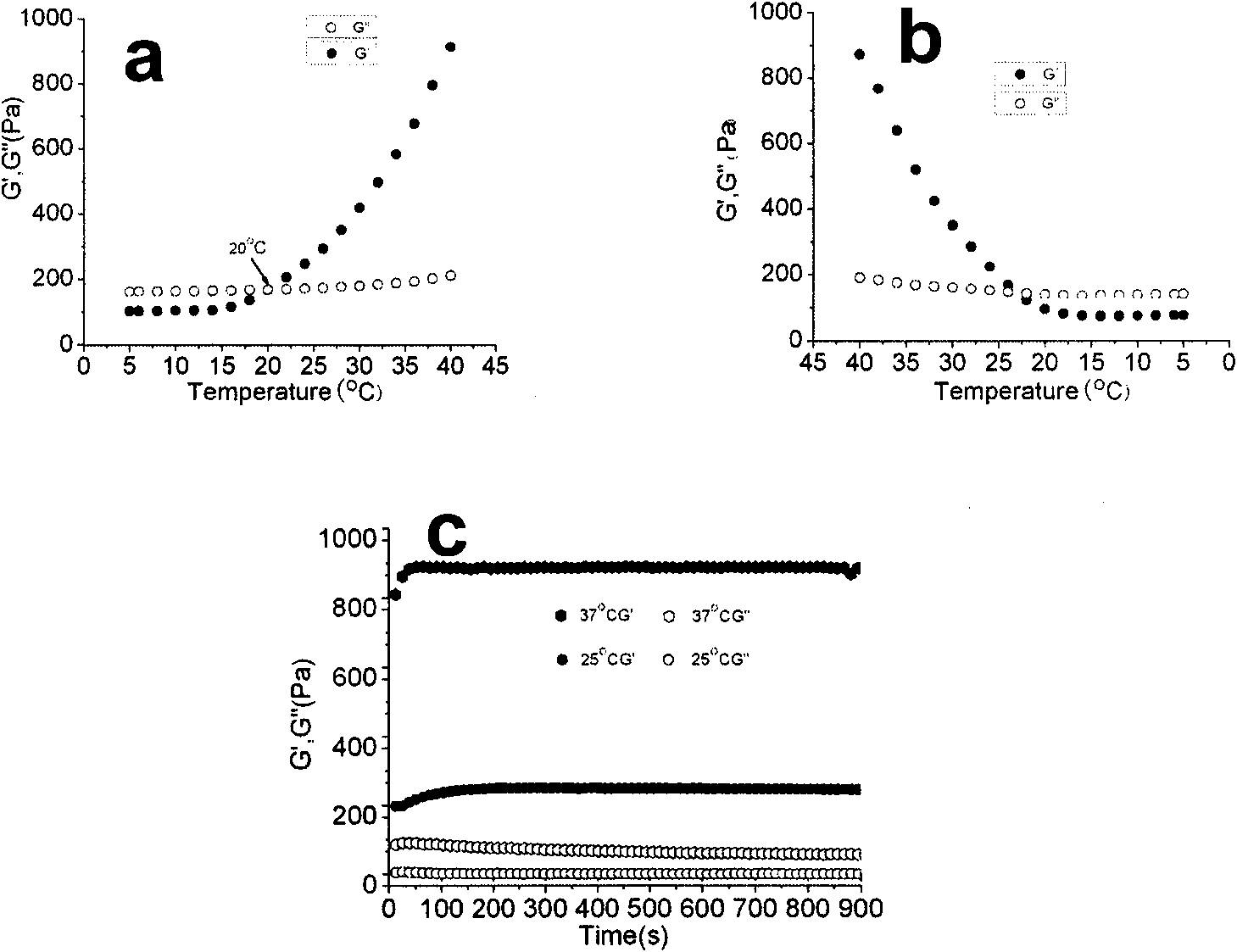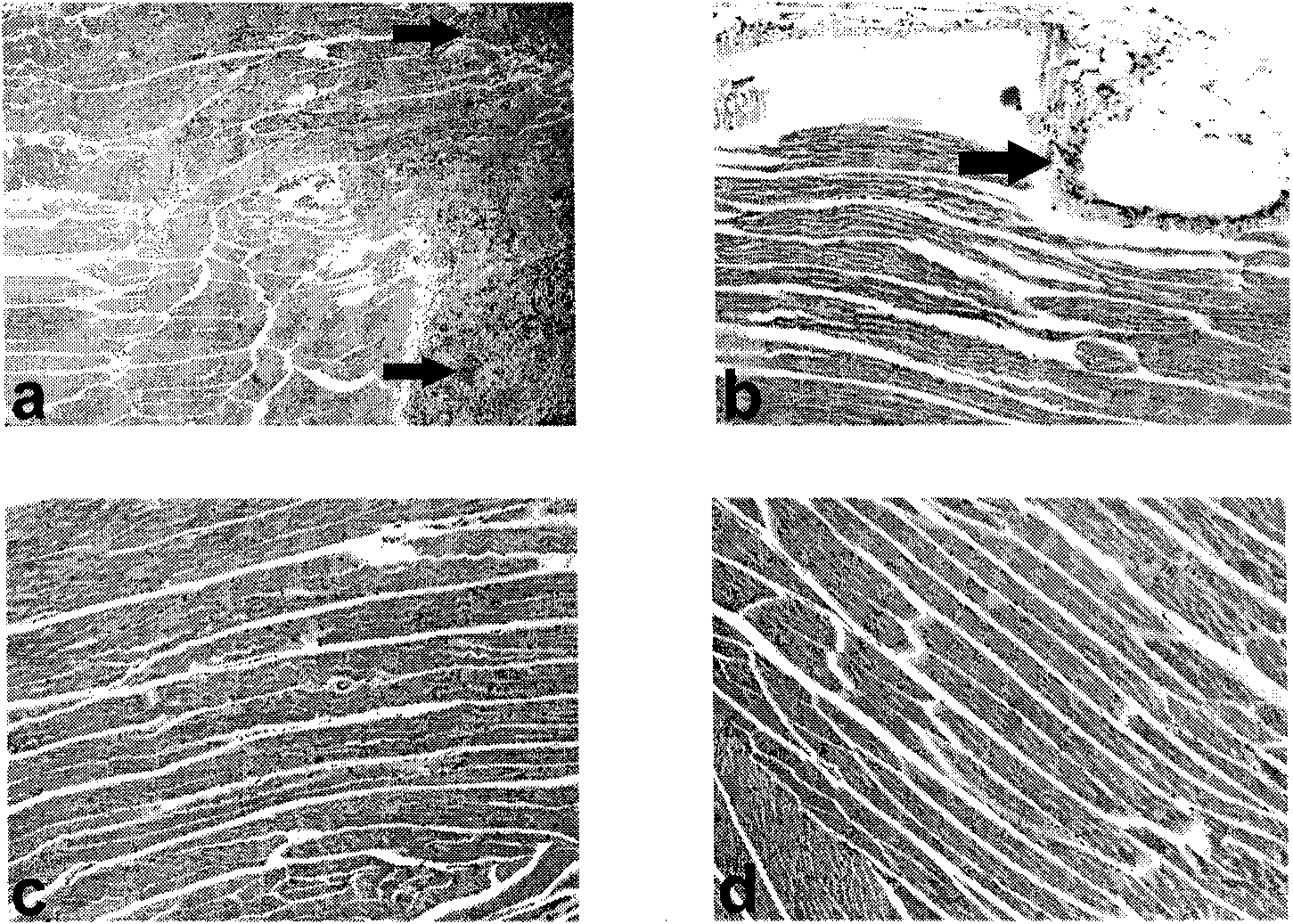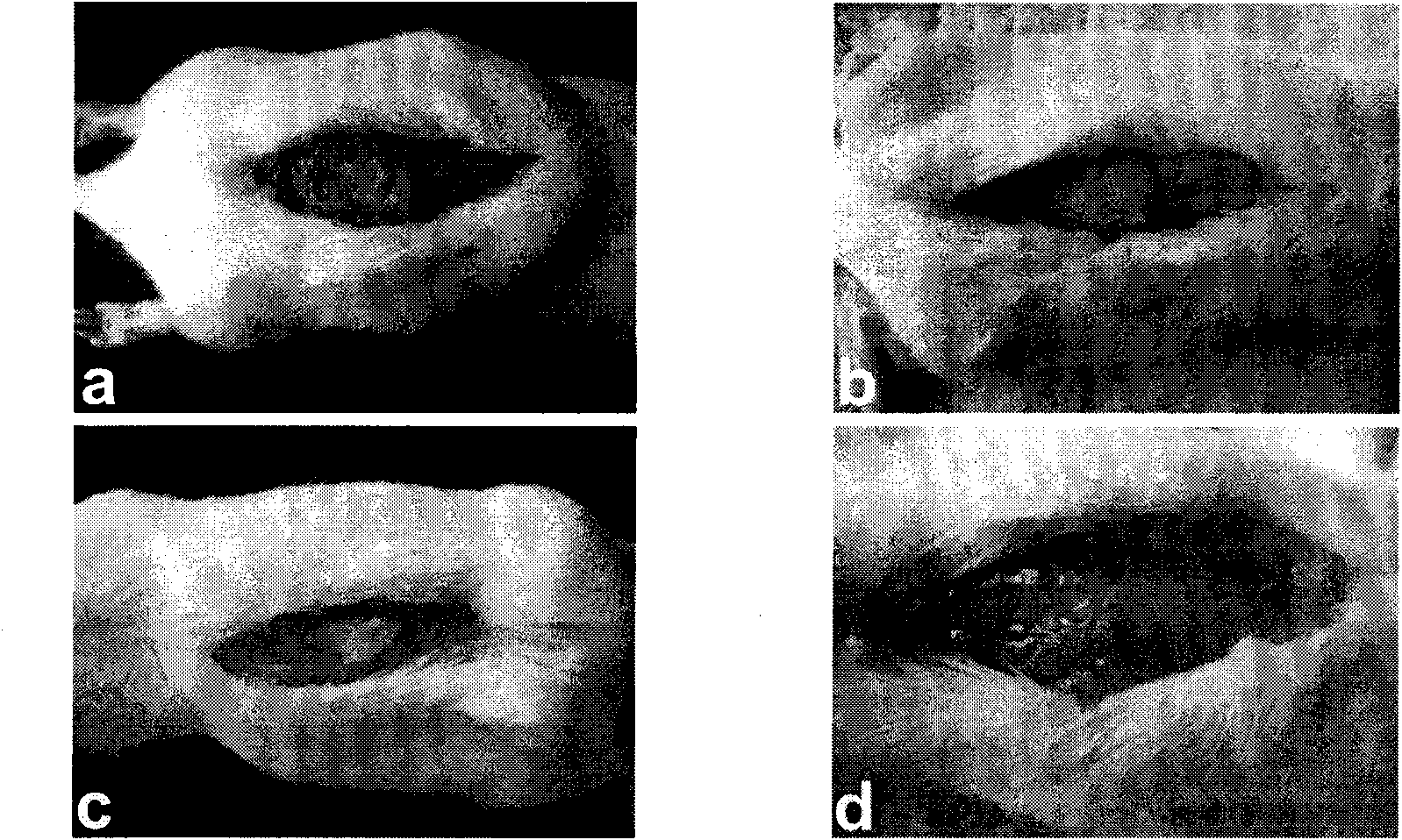Temperature sensitive chitosan preparation and preparation and application thereof
A technology of chitosan and temperature sensitivity, which is applied in the direction of organic active ingredients, medical preparations containing active ingredients, surgical drugs, etc., can solve the problems affecting the biocompatibility and safety of materials, restrict the application of minimally invasive surgery, Restrict promotion and application and other issues to achieve good application prospects, prevent and prevent cerebrospinal fluid leakage, and achieve the effects of good physical isolation
- Summary
- Abstract
- Description
- Claims
- Application Information
AI Technical Summary
Problems solved by technology
Method used
Image
Examples
Embodiment 1
[0027] Now, the present invention will be described in detail in conjunction with the embodiments, but the implementation of the present invention is not limited thereto. Embodiment 1: Preparation of thermosensitive chitosan
[0028] The first step, the preparation of chitosan
[0029] Take fresh shrimp shells, remove the head, feet and tail, wash them with water, soak them in 5% HCl and 10% NaOH respectively to remove calcium and protein, wash until neutral, dry, and grind to obtain powdered chitin. Take powdered chitin and deacetylate it in 50% NaOH solution above 100°C for more than 24 hours, then neutralize, wash with water for injection until neutral, dehydrate with alcohol, and finally vacuum-dry to obtain chitin with a deacetylation degree of 85-95%. Tetra sugar.
[0030] The second step, alkalization of chitosan
[0031] Get prepared chitosan, add 10 times the volume of 50% (wt / wt) KOH solution, fill with N 2 For protection, alkalization at 15°C for 24h.
[0032] ...
Embodiment 2
[0038] Example 2: Research on rheological properties of temperature-sensitive chitosan
[0039] A 2% temperature-sensitive chitosan solution was subjected to temperature scanning and time scanning with a rheometer. The temperature change frequency was 1°C / min and the vibration frequency was 1 rads. Gel time.
[0040] The storage modulus of 2% thermosensitive chitosan increases sharply with the increase of temperature during the gel formation process, showing typical gel characteristics, while the change of the loss modulus is not large. During the recovery process of the gel, the storage modulus drops sharply, and the loss modulus does not change much. Therefore, the temperature-sensitive chitosan prepared by the present invention has good temperature sensitivity and gel recovery. It was shown that the material can form a gel in figure 1 ).
Embodiment 3
[0041] Example 3: Biocompatibility study of thermosensitive chitosan
[0042] 48 Kunming mice were selected as experimental animals, and 2% thermosensitive chitosan was injected into the leg muscles of the mice, and the animals were sacrificed at the 1st, 2nd, 3rd, and 4th weeks respectively, and the muscles at the injection sites were injected for 10 % formalin was fixed, and HE staining was performed to observe its biocompatibility.
[0043] After 1 week of injection, there are a large number of inflammatory cells around the material, which is due to the normal reaction of the body caused by the entry of foreign matter, and the inflammatory cells are significantly reduced after 2 weeks, and there are no obvious inflammatory cells at the 3rd and 4th weeks , so the results show that the thermosensitive chitosan prepared by the present invention has good biocompatibility (see attached figure 2 ).
PUM
 Login to View More
Login to View More Abstract
Description
Claims
Application Information
 Login to View More
Login to View More - R&D Engineer
- R&D Manager
- IP Professional
- Industry Leading Data Capabilities
- Powerful AI technology
- Patent DNA Extraction
Browse by: Latest US Patents, China's latest patents, Technical Efficacy Thesaurus, Application Domain, Technology Topic, Popular Technical Reports.
© 2024 PatSnap. All rights reserved.Legal|Privacy policy|Modern Slavery Act Transparency Statement|Sitemap|About US| Contact US: help@patsnap.com










